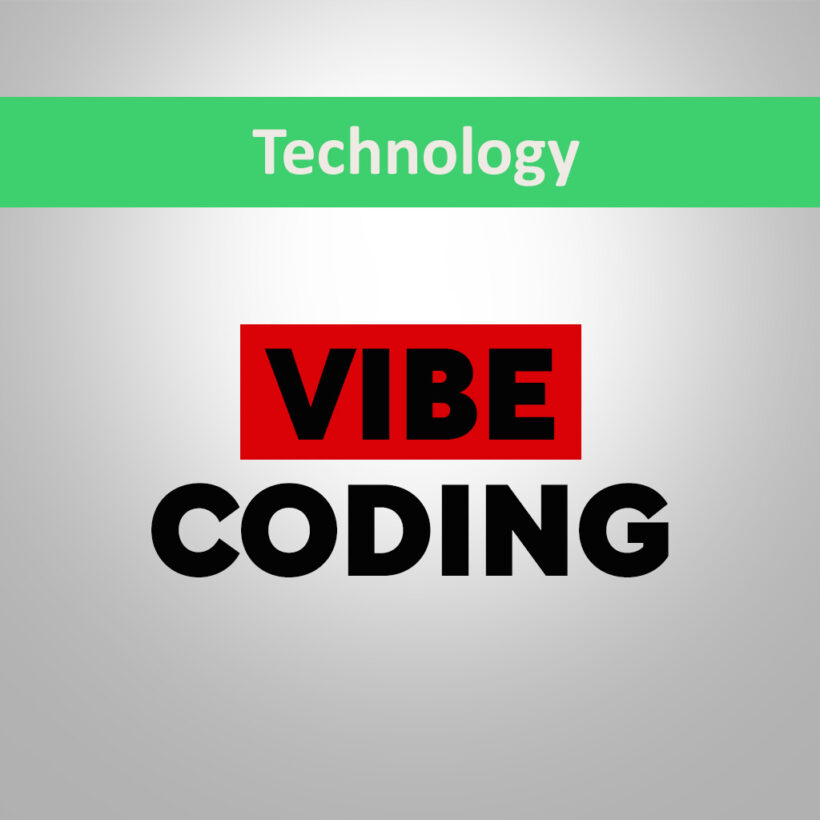The world of programming is constantly evolving, with new methodologies and philosophies emerging to make coding more efficient, enjoyable, and accessible. One such trend gaining traction in 2025 is “Vibe Coding.” But what exactly is it?
Vibe Coding isn’t just about writing lines of code—it’s about flow, intuition, and the developer’s emotional and mental state while programming. It emphasizes creativity, comfort, and a seamless connection between thought and execution.
What is Vibe Coding?
Vibe coding refers to the practice of instructing AI agents to write code based on natural language prompts. A relaxed, intuitive, and often spontaneous approach to programming where the developer focuses more on flow, creativity, and experimentation rather than strict planning or structure.
How to Enhance Your Vibe Coding Sessions
Want to give vibe coding a try? Here are a few tips to get the most out of the experience:
Set the Mood: Music, lighting, and a comfortable space can help you get into flow.
Limit Distractions: Turn off notifications. Avoid multitasking.
Don’t Overthink: Let go of planning paralysis. Just start typing.
Use a Playground: Tools like CodePen, JSFiddle, or a simple sandbox repo are great for vibing.
Capture the Good Stuff: If you stumble onto something interesting, jot it down or save snippets — you can clean up later.
Why is Vibe Coding Becoming Popular?
- Burnout Prevention: Developers are prioritizing mental health and sustainability in their workflows.
- Remote Work Culture: With more coders working from home, personalizing workspaces has become essential.
- AI & Automation: Less time debugging = more time for creative coding.
- Gen Z Influence: Younger developers value aesthetics, comfort, and work-life balance.
- Open-Source Communities: Sharing setups and tools has made Vibe Coding a social movement.
Is Vibe Coding the future?
My initial vibe coding experience ended shortly after. Within less than two hours, I built a proof-of-concept web app that utilized two back-end APIs, which called to Gemini Deep Research and delivered data that I could utilize in markdown form.
I got the job done without writing any code and achieved the desired outcome in no time and effortlessly. I also understood that with growing codebase, the need also increases to assist your special agent to stay scoped in those areas of code that require changes.
As soon as I knew how to set the scope of my code-building assistant, the potential increased exponentially quickly. It is not an actual panacea to coding something out of nothing, but it will produce 10 times the work of an average programmer. The speed of software development and the systems that enable it are going to go through the roof. Even with the scary swearing session and freedom to go off the deep end, vibe coding does indeed work, and if you already have a foundation level of knowledge, you’ll experience a gigantic boost in productivity.
Since that initial ill-fated hour of vibe coding, I’ve been waking up with ideas I wish to vibe with. I’ve taken a bit more time on my first project to add extra API functions, organize and refactor the website, enable downloading the markdown file through the web UI, and a lot more. The moment you understand what you can do with AI coding assistants, you begin to perceive things differently. Everything turns into a nail where you can simply pound with a few prompts.
We’re experiencing a world which is transforming very rapidly. New AI-driven features are emerging quicker than we can use them, and the jolt I experienced from using something this revolutionary is once in a lifetime.
I highly recommend you take and try vibe coding. If you miss this trend, you will be left behind. Thanks, my friends!
Why Vibe Coding matters now
Historically, bringing an idea to an app took technical knowledge or the expense of hiring developers. This left a huge wall between individuals who had ideas and the power to execute them.
Recent figures reveal that 82% of companies have a developer talent shortage, with development backlogs increasing. Democratization of app development is now an imperative business requirement, rather than a nicety.
With the emergence of sophisticated AI, that barrier is dissolving. Today, AI app development platforms such as Replit Agent can take ideas written in plain English and convert them into functional apps—making app development accessible to anyone from entrepreneurs to teachers.
The growth of AI capability is astonishing. Nearly every seven months, what work can be done by AI alone is doubled.
Tips for more effective vibe coding
Like most things, there’s a right and wrong way to go about vibe coding. If you’re brand new to the world of AI and LLMs, the idea of being able to build apps by just typing to your own personal AI agent is probably very exciting.
But before you jump in head first, here are some tips to ensure you’re able to take full advantage of AI coding assistants and avoid getting bogged down along the way.
- Be specific: Don’t use open-ended questions when directing AI agents. Rather, give concise and accurate instructions on what you wish to obtain. This enables the AI to more precisely convert your vision into code and saves you from unnecessary iterations or misinterpretations.
- Work in Loops, Not Lumps: Rather than offloading everything at once, build and refine your project in short, creative sprints. Focus on one small feature or interaction, then pause to reflect, test, or tweak. This keeps your momentum high while giving you natural “rhythm breaks” to course-correct or evolve your ideas organically — especially helpful when working with limited attention spans or AI assistance.
- Snapshot Before You Experiment: Before diving into a risky idea or spontaneous code change, save a quick snapshot or duplicate of your current working state. Whether it’s a Git commit, a copy-pasted file, or a named version in your editor, this gives you creative freedom without fear — like a safety net for your coding experiments. You’ll stay in flow knowing you can always bounce back if things go sideways.
- Ask plenty of questions: Interact with your AI tool actively by asking numerous clarifying questions, e.g., how to best resolve a specific issue or what technologies and frameworks could be most appropriate for your objectives. Asking questions regarding the implementation behind certain features within your app can also prove incredibly useful when debugging, as it allows you to trace and fix problems systematically.
Why Developers Love Vibe Coding
It’s Fun
Let’s be honest — programming can sometimes feel like a chore, especially when you’re bogged down by bureaucracy, technical debt, or micromanagement. Vibe coding brings back the fun. It’s what many developers fell in love with in the first place: the thrill of making something from nothing.
It Encourages Creativity
By taking away the pressure to “get it right,” vibe coding invites in revolutionary, out-of-the-box thinking. It’s particularly helpful in artistic disciplines such as design, animation, and game development, where experimentation is inherent.
Conclusion:
Though some might write Vibe Coding off as a fleeting trend, its origins—developer joy, ergonomic productivity, and AI-facilitated workflows—are durable. As coding continues to become more widespread, the process of coding is just as important as the result.
Whether you’re a veteran developer or a newcomer, adopting Vibe Coding can be more enjoyable, effective, and long-lasting.
What’s your coding vibe? Share your go-to tools, configurations, or music playlists in the comments!


